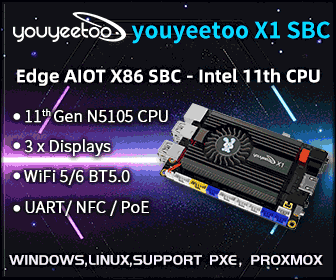MINIX MINI HD PC Based on Intel Atom D2550 Sells for $119
MINIX MINI HD PC is a barebone x86 computer without RAM or hard disk that has been announced last year, and it has just come to my attention that the system sells for just $119 on Geekbuying (excluding shipping), so once you add (up to 4GB) DDR3 RAM, and a SATA hard drive, you may have a basic x86 Linux or Windows system for about $200. MINIX MINI HD PC specifications: CPU – Intel dual-core (4 threads) D2550 processor @ 1.86GHz Chipset – Intel NM10 GPU – Intel GMA 3600 Series System Memory – 2x 1.5V DDR3 @ 800/1066MHz SO-DIMM sockets supporting up to 4GB of system memory (GeekBuying reports that “8GB (4GB x 2) memory is supported unofficially, stability will not be guaranteed by Intel”) BIOS – 1 x 16Mbit flash with AMI BIOS. Supports Plug & Play, Advanced Power Management ACPI, STR, CPU temperature, Fan speed, System Voltage […]





